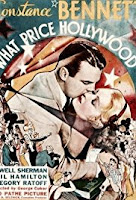As films go, this one looks better than it should given its lean budget of $2.3 million. The subtitle -- "The Trial of America's Biggest Serial Killer" -- is provocative, and the filmmakers pretty clearly are opposed to abortion, even though some of the law enforcement characters describe themselves as pro-choice.
As narrative goes, this hews to the facts. Philadelphia police and the FBI get interested in Kermit Gosnell initially because he seems to write an excessive number of opioid prescriptions. When they go to his clinic, they find unsanitary conditions, inadequately trained medical assistants, several dozen jars of little tiny feet and plastic garbage bags full of aborted fetuses.
Pretty creepy. Turns out that Gosnell's office and practice have not been visited by health inspectors for 17 years, at the explicit direction of city officials. Further research reveals that the doctor has performed very late-term abortions, violating state law, and that at least one woman seeking an abortion died in the facility and her death was never investigated. His assistants reveal that he has systematically killed live-born babies.
Gosnell, his medical assistants and most of his pregnant clients are African American. (White patient sare given nicer rooms upstairs.)
The doctor, as portrayed, is a puzzle. He seems blithely unconcerned about his legal jeopardy and more devoted to his exotic pet turtles than to his unfortunate patients. He says several times that he hasn't provided any services that he wouldn't provide for his own daughter.
The doctor is put on trial, convicted of several killings and sent to prison for life.
Resistance
In the 45 years since Roe v. Wade, there have been more than 50 million abortions in the United States. Americans know that Kermit Gosnell is not the face of abortion, however much the makers of this movie might wish to convey that message.
What is remarkable is the yearslong squeamishness about acknowledging what happened in the Gosnell medical office in Philadelphia. It suggests a near paranoia about the sturdiness of public support for abortion rights.
Think about it. Generally, we might expect the story of a doctor's criminal maltreatment of pregnant black women to be grist for a movie of righteous anger. Just not this story.
Yes, most people in the film industry are progressives and hold pro-choice views. But they also could be assumed to favor gun control and this hasn't stopped them from releasing many, many shoot-em-up movies. They don't seem to worry that these will inspire more gun sales or deaths in inner cities.
In addition, the industry doesn't shy away from stories about actual criminals. Two weeks ago, I discussed one about a true-life bank robber. A few weeks before that there was a story about a true-life drug dealer. Earlier this year there was one about true-life mafia don John Gotti.
One clue is in the distribution of "Gosnell." As best I can tell, it is showing on only one screen within 50 miles of Manhattan, and not at all in the blue cities of Los Angeles, Denver, Boston, Seattle and Chicago. In short, theater owners have concluded that those populations want nothing to do with a story about Kermit Gosnell.
Honestly, I think the fears are misplaced.



